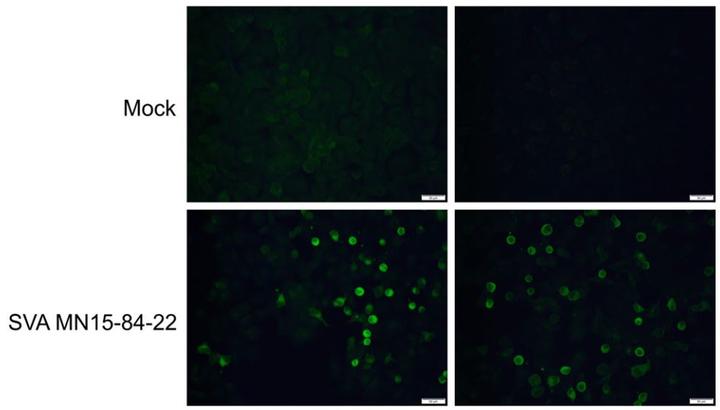Detection of the emerging picornavirus Senecavirus A in pigs, mice, and houseflies

Abstract
Senecavirus A (SVA) is an emerging picornavirus that has been recently associated with an increased number of outbreaks of vesicular disease and neonatal mortality in swine. Many aspects of SVA infection biology and epidemiology remain unknown. Here, we present a diagnostic investigation conducted in swine herds affected by vesicular disease and increased neonatal mortality. Clinical and environmental samples were collected from affected and unaffected herds and were screened for the presence of SVA by real-time reverse transcriptase PCR and virus isolation. Notably, SVA was detected and isolated from vesicular lesions and tissues of affected pigs, environmental samples, mouse feces, and mouse small intestine. SVA nucleic acid was also detected in houseflies collected from affected farms and from a farm with no history of vesicular disease. Detection of SVA in mice and housefly samples and recovery of viable virus from mouse feces and small intestine suggest that these pests may play a role on the epidemiology of SVA. These results provide important information that may allow the development of improved prevention and control strategies for SVA.